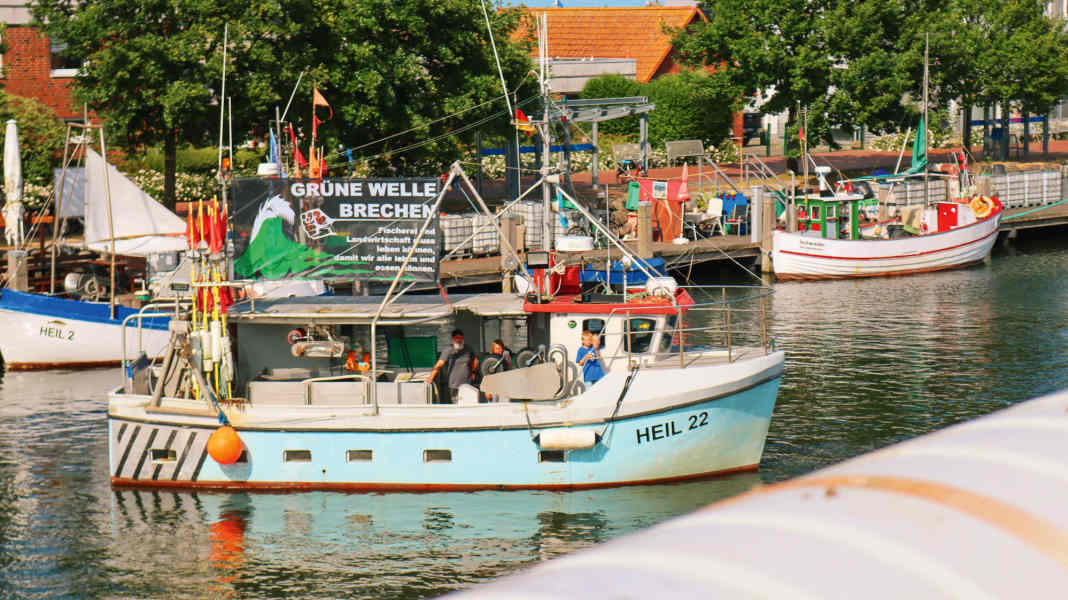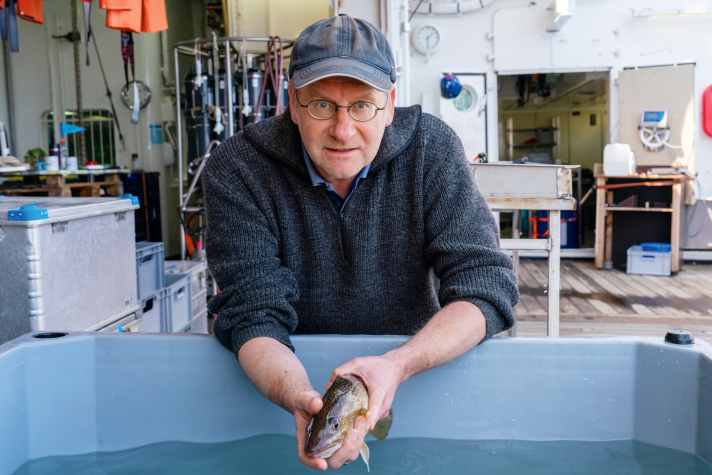Interview: Scientist believes national park debate is a storm in a teacup
Fabian Boerger
· 19.10.2024

Prof Reusch, the successor to the Baltic Sea National Park, the Baltic Sea Protection Action Plan, has been on the market since March. What do you have to do with it?
As GEOMAR, we take care of reef and seagrass monitoring, and we keep an eye on the situation of fish stocks. We therefore provide scientific input and are directly involved.
Half a year has passed since it became known. In the meantime, the action plan has gone quiet. Do you know what the current status is?
I assume that the Schleswig-Holstein Ministry of the Environment will first draw up the plans in great detail and with great care. There will then be a public participation process. That could take another six months or so. But that is the normal course of events.
In other words, is it now being clarified where the planned nature conservation areas are located?
Exactly. It's also a question of the traffic regulations. This is not entirely trivial in legal terms. In other words: who is allowed to drive into the areas, when and how, what speed limits are there and so on. The state prepares proposals, which are then discussed in public. Ultimately, however, the federal government has to approve them.
What do you think of the plans known so far?
The use of no-take zones in the south-west of the Baltic Sea is long overdue and primarily affects fisheries. This is now a tried and tested instrument all over the world - and has been for 25 to 30 years.
Water sports enthusiasts are particularly sensitive to the planned area restrictions.
Well, the restrictions in the action plan are minimal for water sports enthusiasts. What will change is that there will be a speed limit of five to ten knots in core zones. These are regions that are particularly important for marine mammals such as harbour porpoises.
The areas where there are to be driving bans in winter (from November to March, editor's note) are bird protection zones. These are mainly wintering areas for ducks that come here from Scandinavia. The restrictions therefore only apply to very few well-defined areas, but these are very valuable for waterfowl.
So you think the measures are justifiable?
Absolutely. It only affects the hardcore surfers who want to surf in winter. Normal sailors probably don't mind. In the middle of winter, 98 per cent of boats are out of the water anyway. That's why the debate about the planned restrictions was a storm in a teacup anyway.
To put it the other way round: from a scientific point of view, do we need even more restrictions?
The whole thing is not done for fun and games. I mean, the birds come here from all over Scandinavia and simply need their resting place. The measures are not a compromise; they are sensible steps.
But of course the whole truth is that the main causes lie elsewhere; for example, munitions recovery is an important issue, and nutrient input is also a huge issue. This is being addressed in the action plan, but I don't think we're being vigorous enough yet. But no: in principle, I don't see the need to go beyond the area restrictions.
In addition, there will also be anchoring bans in the seagrass beds in future.
Yes, exactly. Because the problem is that where sailors like to anchor, because it's quiet and sheltered, that's also where the seaweed likes it best. You have to find compromises there.
Are mooring fields with buoys anchored in the ground to which boats can moor such a compromise?
Absolutely. A lot of research into such alternatives is already being carried out in the Mediterranean. There are significantly more superyachts there. Their anchors exert a much higher pressure on the bottom and cause correspondingly greater destruction. This is why more fixed anchor points are used there. It is important that the anchor chain is kept taut with an extra buoy. This prevents the chain from swinging around and shaving off all the seaweed within a certain radius. If you set up the seagrass-friendly anchor points in the Baltic Sea, you would choose the better solution straight away.
Where do you see a need for water sports enthusiasts to catch up?
We should take a positive view of marine protection, initiate things ourselves and go beyond what is required by law. There are areas where there is still room for improvement - for example when it comes to emptying chemical toilets or antifouling. But beyond that, the boats are no problem at all when they sail over the seaweed fields.
Interview partner Prof Dr Torsten Reusch

The scientist at the GEOMAR Helmholtz Centre for Ocean Research in Kiel is head of the Marine Ecology research field there and deals with the biological effects of global change. Together with his research colleagues, he is developing various methods for the regeneration of seagrass meadows, among other things.

